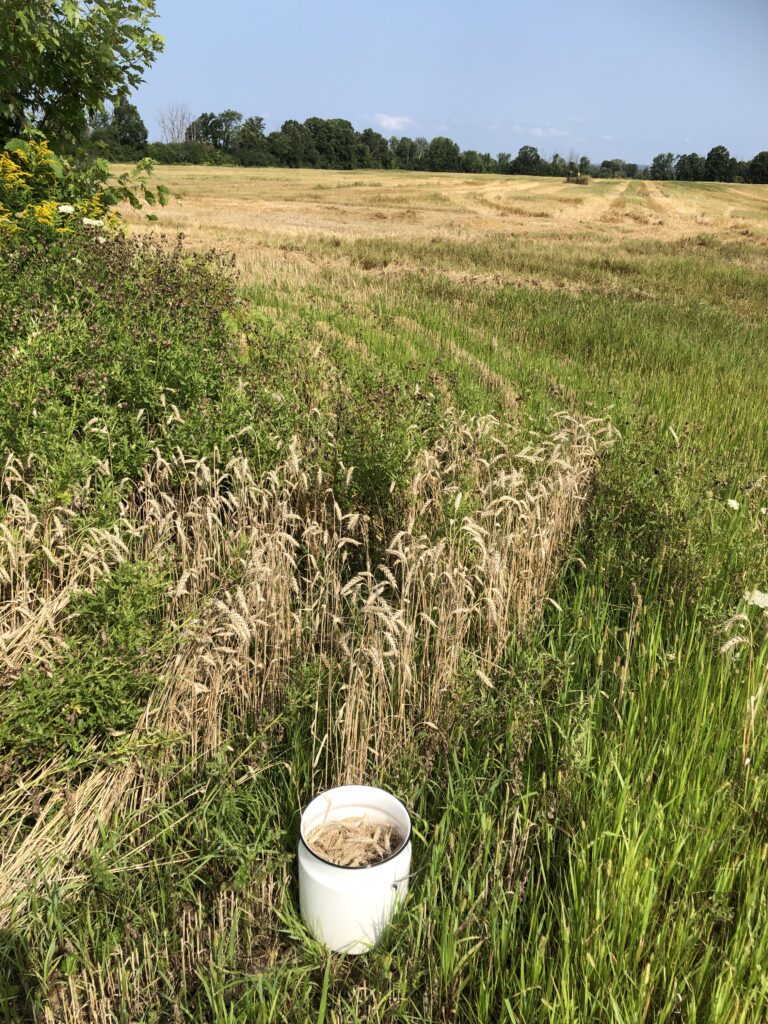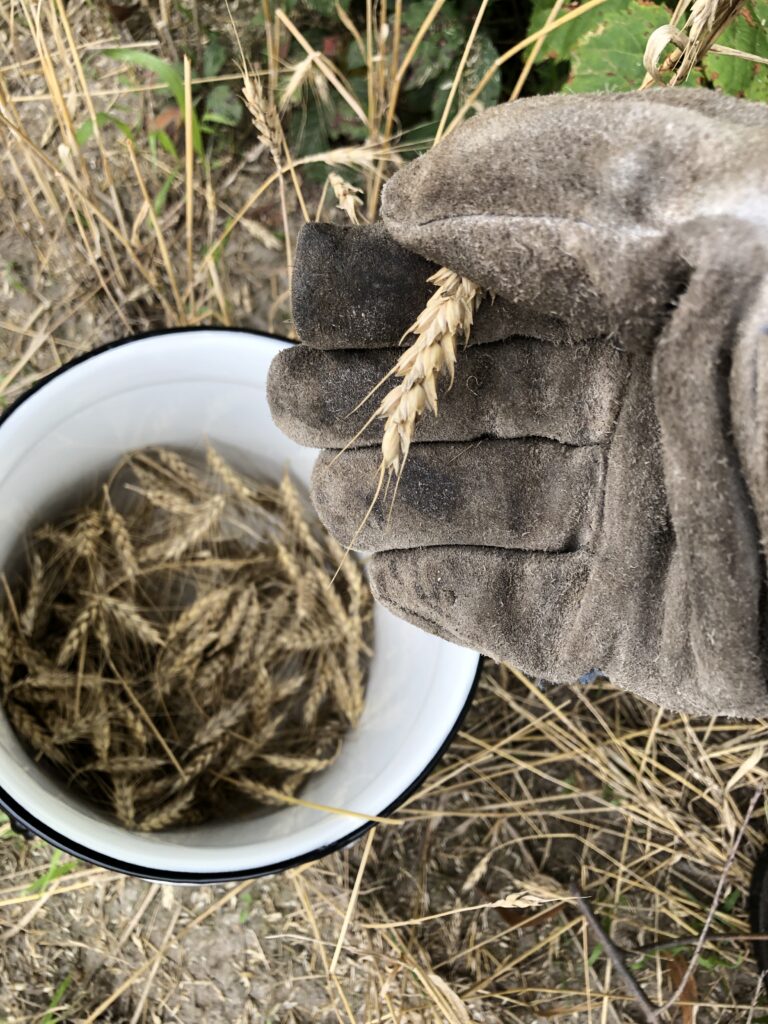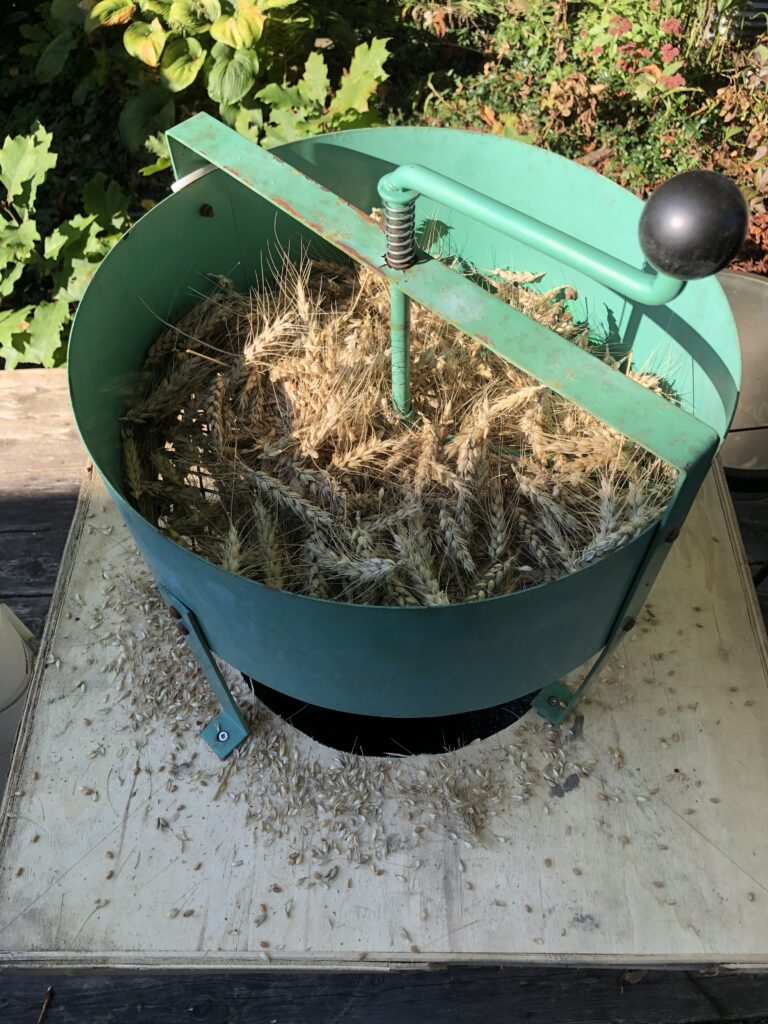I enjoy gleaning near my home after a local farmer is totally done harvesting for the season. The farmer has an annual crop rotation that includes soy beans and corn. This year it was wheat. This post describes what I did to glean and process the wheat.
Gleaning
After harvest, some wheat may be left at the edges of the field. Ears of wheat containing the seeds are gathered by snapping them off the stalk.

Remnants of wheat in a field after harvest with a bucket of wheat ears.

Gathering the wheat by snapping off the ear.
Threshing
The process of separating the grains of wheat from straw and husks begins with threshing. Threshing pushes the grains out of their protective husks. The soil sifter shown below was bought from Lee Valley tools a few years ago and works well for threshing. I washed it before use. Threshing with this device works best when I use only a few handfuls of ears and press hard when I turn the handle.

Threshing wheat with a repurposed clean soil sifter.
Winnowing
To winnow the wheat I sift it again. The sieve below is sold by Lee Valley. I bought a broken fan from Value Village, installed a new pole for it and use it to blow the chaff from the wheat. Finally, for small quantities of grain, a blow drier set to cool can remove remaining chaff.

A smaller soil sieve sifting wheat grains from husks.

A blow drier blows away remaining chaff at the end of winnowing.
Grinding
After winnowing, the pure grain is ground. I use a Victoria brand grinder. As manufacturer says, this mill does not grind to a fine power. I haven’t tried using a food processor because I don’t want to heat the flour and possibly ruin the flavour. I put the flour in the freezer to keep it from spoiling.

Victoria grinder with flour.
Bread making
I modified a recipe from the book Mastering Fermentation by Mary Karlin. To make the Rosemary-Lemon Dutch Oven bread recipe on page 128, I used 2 cups of my home made flour and 2 cups of flour from Almanac Grain. The resulting loaves are tasty and I have another in the oven as I’m writing this.
